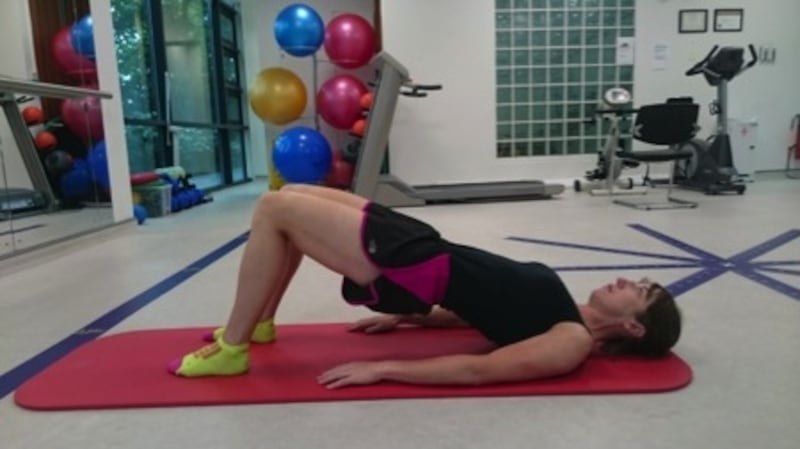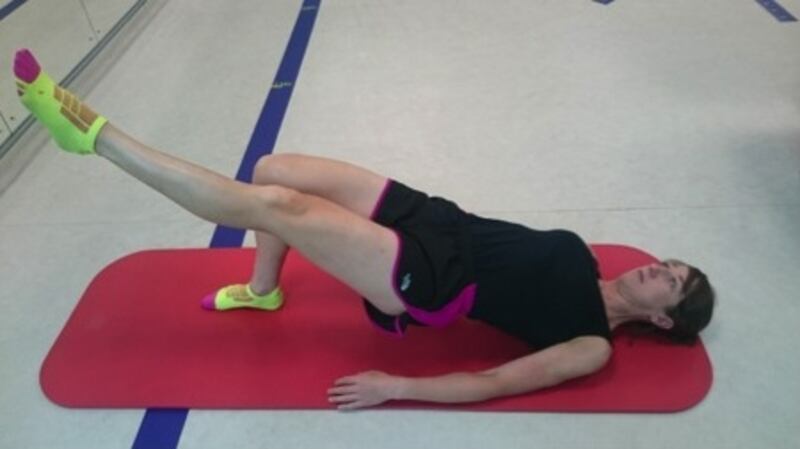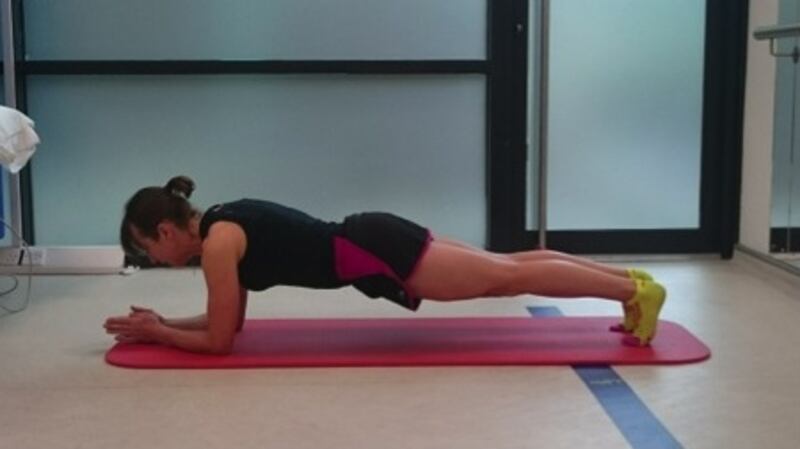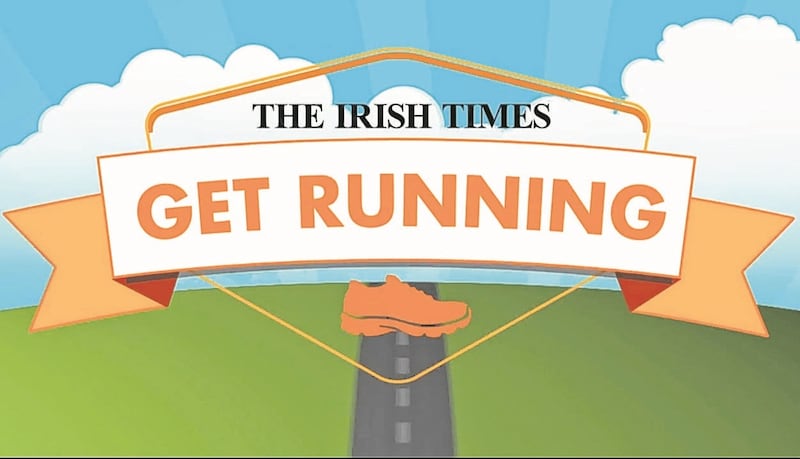As with any type of exercise or training it is important to be mindful of keeping our joints healthy. Therefore, the right kind of strength and flexibility exercises can help. It’s also important to take adequate rest when training, to allow your body to absorb training and give it a chance to recover when needed.
I run a lot in my triathlon training and I find that Pilates is a fantastic form of exercise to maintain strong supple muscles. It’s a fantastic form of core exercise, that also incorporates dynamic stretches, which assists in maximising your body for running.
To remain injury free when running, a strong core (abdominals and lower back) and strong gluts (hip and buttock muscles) are important. These are some simple exercises that are helpful in keeping your core strong and hips “run fit”.
Gluts bridge

In order to strengthen your gluts you can do a simple bridge exercise. Lie on your back, bend your knees, squeeze your buttocks and lift your hips up off the mat – your shoulders hips and knees should be in a diagonal line and you should not be arching your back. Keep your pelvis level and aim to hold this for 5-10 seconds .Repeat this eight to 10 times as a starting guide. If your hamstrings (back of your thighs) start to cramp just rest until it subsides. This is often a sign that your gluts muscles are weak so even more of a reason to kick start them into action.
Single leg gluts bridge

If you wish to progress from the gluts bridge you can add in a single leg lift. Keep your hips level and lift one leg off the mat, straighten the leg out but keep the knees in the same line. Hold for five secs and see if you can switch and lift the opposite leg up. This is a great exercise to increase pelvic control when running particularly if you feel loose in the hips when you run.
Planks

Planks are a great all over core exercise and help develop strength in your abdominals, back extensors and shoulders. When starting off with this exercise see if you can hold the plank position for 10 seconds and repeat three times. You should aim to keep your back flat – if you feel your back start to arch or your bottom rise up then stop, recover and try again.
It’s vital to listen to any niggles in your body in order to remain injury free. It’s helpful to have a consultation with a chartered physiotherapist to examine and treat any problems that arise. Physiotherapists see a lot of runners needing prescription insoles/orthotics and use a gait scan analysis and 3D imaging to assess for these.
Aileen Flynn is a clinical specialist physiotherapist in musculoskeletal care at Beacon Hospital and a triathlete.

Sign up for one of The Irish Times' Get Running programmes (it is free!).
First, pick the programme that suits you.
- Beginner Course: This programme is an eight-week course that will take you from inactivity to being able to run 30 minutes non-stop.
- Stay On Track: The second programme is an eight-week course for those of you who can squeeze in a 30- to 40-minute run three times a week.
- 10km Course: This is an eight-week course designed for those who can comfortably run for 30 minutes and want to move up to the 10km mark.
Best of luck!









